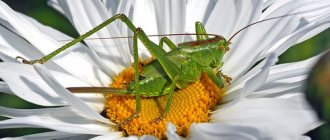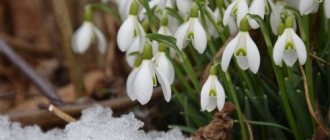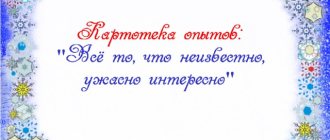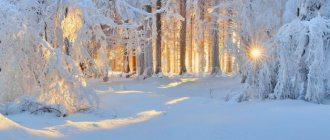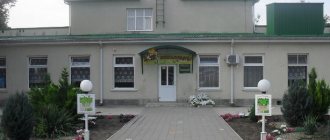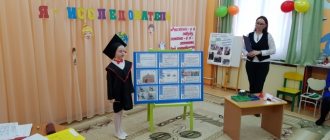MAGAZINE Preschooler.RF
Project – “Earth Day”Type of project: educational and research.
Project participants: children of senior preschool age, parents, teachers.
The duration of the project is 2 weeks.
Completion period – April 15 – 30
Stage I
Relevance
In preschool childhood, the foundations of personality are laid, including the attitude towards nature and the surrounding world. Kindergarten is the first link in the environmental education system. Forming a humane attitude towards nature, I try to convey to children that man and nature are interconnected, therefore they must protect and care for it.
Problem:
- preschoolers have not fully developed a responsible attitude towards the environment and human activities in it.
The goal of the project is to develop in children ideas about the need to take care of nature and their Earth through various types of activities.
Tasks:
- to form children’s ideas about the need to take care of the surrounding nature, plants, animals, and water bodies
- expand children's understanding of animal life in spring
- expand children's knowledge about the life of plants, their needs, ways to care for them
- develop curiosity, communication, and a value-based attitude towards the natural world
- develop children’s productive activities and creative abilities; strengthen children's health, conduct hardening procedures
- Give children the joy of participating in joint activities.
Stage II
- Preparation for project implementation.
- Select methodological literature on the topic.
- Select fiction books to read to children.
- Select didactic material, visual aids (albums for viewing, paintings, board games)
- Draw up a long-term action plan.
Stage III.
Project implementation.
Socialization:
Didactic games: “Who needs what?”
,
“Who eats what?”
,
“Find a house”
,
“What first, what then”
,
“Let’s help the plant”
,
“The forest is a home for animals”
.
Excursions:
- to Ozerko
- to the Svir River
- to the Svirskaya Victory Park.
Word games: “How it was”
,
“The Magic Bag”
,
“Domino”
,
“The World Around Us”
,
“What Was, What Will Be”
.
Cognition:
Teacher's story. “About the World Holiday “Earth Day”
,
“Our home, our planet - it must be loved and protected”
.
Examination of photographs, reproductions, illustrations, drawings of other children.
Research activities: playing with water, experimenting with water and earth.
Educational games: “What kind of water is there?”
,
“Magic Wand”
,
“Cut Pictures”
,
“Confusion”
.
(flora, fauna, underwater world)
Creating a “garden on the window”
, drawing up diagrams, sketches.
Experiments:
- "Sowing a seed"
- "Flame pollutes water"
- "Plants drink water"
.
Mastering operations with a microscope.
3. Communication speech development:
Conversations with children on the topics: About the importance of soil and water in the life of all living things”, “How to behave in nature”
,
“We are friends of nature”
, using the presentation
“Nature of the Lodeynopol Territory”
,
Development of “Rules of Conduct in the Forest”
4. Reading fiction:
- Learning the poem "The Hardworking Butterfly"
- Reading and looking at illustrations in the encyclopedia “Animal World”
;. - The work of art by V. Tesnov “The hospital under the pine tree”
, L. Tolstoy
“O.
Ants" ;
M. Syrov “Snowdrop”
,
- “Links of the Same Chain”
by Y. Morgolin ; - Memorizing the poem “Laughing Frogs”
; - Reading the fairy tale by V. Garshin “The Frog Traveler”
; - Reading the story by K. Paustovsky “Frog”
; - Reading a fairy tale by G.Kh. Andersen "Thumbelina"
.
5. Artistic and aesthetic activities:
Spring Festival
- Learning songs and dances for the holiday
- Listening: “Sounds of Nature”
,
“Sounds of the Forest”
. - Round dance “And I’m in the meadow”
.
6. Sports and recreational activities:
- Competition "Wasps, bees, bumblebees"
; - Outdoor game “At the bear in the forest”
; - Game-competition “Who is faster? ";
- Physical school
; - Outdoor game “Catch a mosquito”
; - Outdoor game "Frogs and Heron"
. - Physical education
" Hike"
7. Developmental environment:
- Albums for viewing : “Seasons”
,
“Wild Animals”
,
“Plants”
, etc. - Didactic games “When does this happen?”
,
"The World of Plants" - Poster “Birds of our region”
- Poster "Animals"
- Works of art and illustrations for them
- Coloring pages “Seasons”
,
“In the meadow”
,
“Who lives in the sea?”
,
"Who lives in the forest?"
and etc., - Selection of encyclopedias, materials from the Internet,
- Watching cartoons.
8. Labor activity:
Work on the kindergarten site and in the group,
Creating a “window garden”
(sowing flower seeds, dill, parsley, lettuce)
, then care, watering, loosening, observing, sketching.
9. Productive activity:
Collective application of palms “Sun”
,
Drawing “Snowdrops, “Spring is coming, make way for spring”
,
"The Rooks Have Arrived"
,
Modeling “Wild Animals”
,
“Willow Branch”
Modeling from Spanish. natural material "Spikelet"
10. Interaction with parents:
With the help of a parent, create a “garden on the window”
.
Homework for parents and children:
"Planet Earth through the eyes of children"
-drawing competition
Crafts from waste material “Trash Fantasy”
Creation of the album “Take care of the Earth”
Parent meeting on the topic of the project.
Stage IV
Project presentation.
- Ecological holiday "Earth Day"
- Design of an exhibition of drawings by children and parents on the theme “Planet Earth through the eyes of children!”
- Album design “Take care of the Earth”
- Theatrical production of the fairy tale “How the Bee Saved the Forest”
| Next > |
Earth Day Project
Short-term project “Earth Day”
(senior preschool age)
Educator: Semakina Z.D.
Relevance
. Human interaction with nature is an extremely pressing issue. Every year its sound becomes stronger. An environmental problem is a problem of environmental pollution and other negative impacts of human activities on Earth. The correct solution to the environmental problem will be carried out if each person develops a sufficient level of environmental consciousness and environmental culture. Already from preschool age, it is necessary to instill in children the idea that a person needs an environmentally friendly environment. That is why it is so important to teach a child to preserve the beauty of nature, so that during this age period he understands how valuable health is and strives for a healthy lifestyle. It is the adults who determine what our children will be like. Naturally, educators want the children to love nature, understand it and take care of it. But it is not enough to want, we must all achieve this through joint efforts. We believe that all of us together and each of us individually are responsible for the Earth, and everyone can preserve and enhance its beauty.
Target
: deepen children’s environmental knowledge, instill in them a humane attitude towards nature, a sense of responsibility for all life on Earth.
Tasks
Educational:
To acquaint children with the diversity of flora and fauna, with its significance for all life on the planet.
To deepen children's understanding that planet Earth is our home.
Develop research skills.
To promote in children the formation of knowledge of norms of behavior in the natural environment and the desire to comply with them in practical activities and in everyday life.
Educational:
Develop interest in the natural world, the desire to understand nature through creative cognitive and research activities;
Develop imagination and thinking in the process of observing and exploring natural objects.
Develop the ability to convey your feelings from communication with nature in drawings and crafts.
Educational:
1. Foster a caring attitude towards nature and the natural heritage of our region.
2. To instill in children the desire to participate in joint work activities on an equal basis with everyone else, the desire to be useful to others.
Project participants
:
children of the preparatory group
educators
parents of pupils
musical director
Project type
: information-creative-research
Project duration:
short-term
(April 13-24)
Expected results
:
children's knowledge about planet Earth, the names of the continents, and its natural resources;
Entertainment in a preschool educational institution for Earth Day in the preparatory group. Scenario
Entertainment in a preschool educational institution for children 6-7 years old “Earth Day”.
Author: Ryazanova Nadezhda Alekseevna.
Position: Educator of MKDOU Anninsky d/s ORV "Rostok" town Anna, Voronezh region. This material will be useful for kindergarten teachers. Goal: formation of an emotionally positive attitude towards the world around us, understanding its condition, caring attitude. Objectives: consolidate knowledge about nature. Review the rules of behavior in the forest. Develop the ability to find the correct answer, develop memory, and speed of reaction. Develop the ability to compare and generalize. Foster a sense of camaraderie, respect for partners and opponents in the game. To cultivate a humane attitude towards nature, a feeling of love for the Earth on which you live. Materials: globe, illustrations of rules of conduct in the forest, d/i “Who Lives Where?”, chips, team emblems, masks for the scene “Butterfly in Danger”, “garbage” for the game, “Earth Day” medallions.
Progress of the game:
Guys, today we are gathered to celebrate Earth Day.
Do you know what kind of holiday this is? (No). Listen here. Many years ago, on April 22, an environmental disaster occurred, a terrible disaster that threatened the lives of all life on Earth: animals, birds, insects, plants - they were all in great danger and were on the verge of extinction, but people all over the planet united and stood up for protection. Earth and environment, to protect our forests, fields, seas and their inhabitants. Here's the story. You and I are also part of our planet and must take care of our Earth, birds, insects, animals. 1 child: Our planet is the Earth. Very generous and rich: Mountains, forests and fields are our dear home, guys! 2nd child: Let's save the planet There is no other like it in the world! Let's scatter clouds and smoke over her, We won't let anyone offend her! Child 3: We will take care of birds, insects, animals. This will only make us kinder. Let's decorate the whole Earth with gardens and flowers. We all need such a planet! (Children listen to the song “Small Country”). The amazing world of nature is rich, beautiful and infinitely diverse. Wherever you are: in the forest, in the meadow, on the bank of the river - mysteries and mysteries surround you everywhere. Today we will try to open several pages of this world, we will give you a quiz “Nature around us”. Two teams will take part in the quiz. This is the “Winnie the Pooh” team (the team captain is indicated) and the “Cheburashka” team (the team captain is indicated). Each correct answer will be scored with a chip. After the quiz, we will count the number of chips and determine the winner of the game. So, let's start with greeting the teams. Greetings from the teams: 1. “Winnie the Pooh” – please: We only want to wish you to show your best. 2. “Cheburashki” - please: We are a fun team, We don’t know how to get bored, You compete with us, You risk losing!
Team warm-up.
Game: “Name it quickly.” Cheburashka team: listen to White-sided Bird.
(Magpie) What plant can burn us? (Nettle) New Year's tree. (Christmas tree) The time of year when nature wakes up. (Spring) Horse in a vest. (Zebra) Who is the animal sanator of the forest? (Wolf) What is the name of the hare's domestic relative? (Rabbit) Team Winnie the Pooh: A wild relative of the pig. (Boar) What is the name of the bear’s home? (Den) Do hares store food? (No) Red-breasted bird. (Bullfinch) What flower blooms without leaves? (Coltsfoot) Who is the orderly of the forest of birds? (Woodpecker) What is the name of the animal that builds dams on rivers? (Beaver) The teams coped with the warm-up. Let's move on to the first task. You must hear and name trees familiar to you from the description. Three trees for each team. Winnie the Pooh team. – This tree is cheerful and elegant at any time of the year. In the spring it blooms with white fragrant flowers, in the summer it rustles with carved leaves, and in the fall its branches are sprinkled with bright clusters of berries. Various birds like to visit it in winter: bullfinches, waxwings, black grouse, wood grouse, blackbirds. (Rowan.) - This tree is called the beauty of the Russian forest. How many songs have been composed about him, how many poems have been written! Slender, with white bark, with thin drooping branches and talkative foliage, it always evokes admiration and joy. And small birds are attracted to earrings with seeds. (Birch.) - Everyone who passes by this tree in the spring exclaims: “It smells so good!” It is strewn with fluffy clusters of white fragrant flowers. Its strong aroma is not only pleasant, but also useful: it cleanses the air of germs. (Bird cherry.) Cheburashka team. – This tree is easy to recognize in winter by its almost black trunk. Its fruits - round nuts - hang on the branches almost until spring. And in early summer it blooms with fragrant yellow flowers. Various insects readily visit flowers rich in sweet nectar. And bees make delicious, healing honey from the aromatic juice. (Linden.) - The rough leaves of this tree consist of halves of different sizes. The wood is also unusual: hard, elastic, does not warp from water, and when dry, does not crack. And the logs made from it are absolutely magical: you can’t split them with an ax - the ax gets stuck in the wood fibers. (Elm.) - They call him a mighty forest hero: even in strong hurricanes he “sits” firmly in the ground. Its wood is an excellent building material; Medicines are made from the bark; wild boars, jays and other forest animals love to feast on the fruits. (Dub.) Third task: Blitz competition “Name the extra word.” "Winnie the Pooh": Maple, linden, birch, spruce, poplar. Squirrel, bear cub, fox, wolf. Dragonfly, mosquito, fly, pike, grasshopper. “Cheburashki”: Rowan, pine, bird cherry, tulip. Rook, shark, flounder, mackerel. Fox, cow, hedgehog, hare, wolf. Now we are going to read fabulous announcements: you have to guess which animal wrote the announcement: I will help everyone whose alarm clock is broken! (Rooster.) Friends! Anyone who needs needles, contact me! (Hedgehog.) I am the most charming and attractive1 I will fool anyone you want to deceive! I urgently ask you to call me by name and patronymic! Don't call her Patrikeevna! (Fox.) It’s very boring to howl at the moon alone. (Wolf.) To the one who finds my tail: keep it as a souvenir. I will successfully grow a new one! (Lizard.) Tired of crawling! I want to take off. Who will lend the wings? (Snake.) Now we will rest a little. Physical education lesson:
Hands raised and waved - These are trees in the forest.
Elbows bent, hands shaken, The wind knocks down the dew. We wave our hands smoothly - These are the birds flying towards us. As they sit down, they will show us - We will fold our wings back. Host: Now we’ll play with you. Playing with the ball “I know...”
Children stand in a circle.
The leader is in the center with the ball. The presenter throws the ball to the player and names the category of the natural object, for example, trees. The preschooler lists 3-5 names of trees. The next player names items from a different category. And now we listen carefully to the questions to the teams. Winnie the Pooh. 1. The longest necked animal. (Giraffe) 2. Who carries the baby in the bag? (Kangaroo) 3. A bird that cannot fly and is not afraid of frost? (Penguin) 4. Long-eared coward. (Hare) 5. Who sleeps upside down? (Bat) 6. Which snake has a hood? (Cobra) 7. Which bird does not build a nest? (Cuckoo) Cheburashki. 8. The largest animal living on land. (Elephant) 9. The largest animal living in the ocean. (Whale) 10. What animal builds dams on rivers? (Beaver) 11. Who carries his house on himself? (Turtle, snail) 12. Which bird has the most beautiful tail? (The peacock) 13. A striped relative of the cat. (Tiger) 14. What animal is called the ship of the desert? (Camel) People lived on the planet, Moms, dads and their children. People will throw a piece of paper, the Planet will become dirty... The game “Let's clean up.”
Children are divided into 2 teams: one team removes paper waste (newspapers, candy wrappers, the other removes plastic waste (plastic bottles, cups, disposable tableware, etc.).
What a great thing you guys did for Earth Day.
How clean it has become, I think that this will be the best gift for the Earth from you guys. Always be kind and responsive to nature, protect it, be friends with it as with your friends. Guys, let's see what kind of garbage was here and what needed to be done with it? — Newspaper and candy wrappers can be buried in the ground, where they will rot and turn into fertilizer for the soil. — Iron cans can also be buried under the roots of young trees so that they grow better; the can will rust and release iron into the soil, which is useful for their growth. And the animals won't get hurt. — Can glass jars be left in the forest? (no, why? They can break, and both people and animals can be injured by the fragments. — Can plastic bottles be left in the forest? (no) They need to be taken with you and thrown into trash containers, because plastic does not rot, remains unchanged and does not bring any benefit to the forest, but only spoils its appearance. And now I will read out five facts about one type of garbage in order. The team that is the fastest to correctly determine what is being said gets one chip. The team that collects the most chips wins this competition. 1. A lot of toys are made from it. 2.It comes in different colors and is very difficult to make. 3.Items made from it weigh little. 4.If you set it on fire, it produces a lot of black smoke that smells bad. 5. It cannot be thrown away, because it does not decompose in nature. (Plastic) 1.It was invented by the Chinese. 2. We get it from wood. 3.It burns easily. 4. It produces a lot of garbage. 5. People usually draw or write on it. (Paper) 1. It is made from sand. 2. Most often it is transparent. 3.When it falls, it breaks. 4.If you heat it up, it becomes sticky like dough. 5. Abandoned in the forest, it can become a source of fire. (Glass) 1. This is something that is abundant in the city, but scarce in the countryside. 2. There is especially a lot of this in an industrial city, where there are many plants and factories. 3. This makes people get sick, get nervous a lot, scream loudly, and this gets even worse. 4.It is produced by various devices and machines. 5.It causes air and environmental pollution. (Noise) 1.It happens when something gets old or breaks. 2. It can be seen everywhere - in the city, in the countryside, even along the roads. 3. Something new can be made from this. 4.It comes in color. (Metal) Now let's play the game "Little Bird". You need to carefully watch where the bird flies (index finger of your right hand). Without turning your head, follow with your eyes alone: right, left, up, to the nose, forward. Twice. (3) Children, do you know the rules of behavior in the forest? Rules: 1. You cannot break tree branches. 2. You cannot tear blades of grass, leaves, or flowers. 3 You must not destroy bird nests, anthills, or animal holes. 4. You cannot bring home animals from the forest. 5. You cannot leave a fire in the forest unextinguished. 6. You cannot pick up bird eggs. Well done boys. V-l: Tree, grass, flower and bird Do not always know how to defend themselves. If they are destroyed, we will be left alone on the planet! Look, guys, what can happen if you and I do not take care of and protect our nature, insects, birds, animals. And now a sketch performed by children: a butterfly, a woodpecker orderly, ants. A butterfly and a woodpecker appear. Butterfly: (crying) What kind of elephant came to our forest, Only noise and crackling, trampled all the flowers, broke my wing! Stepped on a worm, Almost crushed a beetle! How will I fly now? I need to see a doctor ASAP! Woodpecker-Nurse: Let me bandage the wing, I’ll quickly put on splints, It’s a difficult case - a fracture. Now we’ll take you to the hospital. (an ambulance siren sounds. Two ants appear) Ant 1: We are forest orderlies, We work day and night! We are ready to help the patient with all our hearts! Ant 2: Let's take you, sister, to the ant hospital! Soon you'll be deftly flapping your wings again! (they take the butterfly and leave).
Yes, guys, such sad stories sometimes happen in the forest. But I know that you are kind children, responsive to nature and its inhabitants, you are friends with it and protect it. Well, friends of nature, you know a lot, you can do a lot of things useful for nature, and I suggest you solve the riddles. (makes 5-7 riddles about animals, birds). 1 You can’t see yourself, but you can hear the song. (Mosquito). 2 Lives in a hole, gnaws on crusts. Short legs. Afraid of cats. Mouse 3 Cries at the threshold, hides its claws, quietly enters the room, purrs, sings. Cat 4 The guys have a green friend, A cheerful friend, a good one, He will stretch out to them Hundreds of hands and thousands of palms. Forest 5. From branch to branch, Fast as a ball, A red-haired circus performer gallops through the forest. So on the fly he picked a cone, jumped onto the trunk and ran into the hollow. Squirrel 6. Angry touchy lives in the wilderness of the forest. There are a lot of needles, but not a single thread. Hedgehog You guessed the riddle, well done. The game “It happens - it doesn’t happen. Ice drift in summer (does not happen). Leaf fall in summer (does not happen). Rain in summer (happens). Dew in winter (does not happen). Frosts in the spring (happens). Thunderstorm in summer (happens). Snowstorm in summer (does not happen). Rainbow in summer (happens). Hail in the summer (happens). Snowstorm in summer (does not happen). Frost in winter (happens). Fog in autumn (occasionally). Drips in summer (does not happen). Frost in summer (does not happen). Frost in summer (does not happen). Puddles in winter (does not happen). Each animal lives in its usual habitat. Really, guys? Now we will play “Who Lives Where?” Children are offered 5 cards with different animal habitats, and they must arrange the animals according to their habitat: forest, desert, farm, pond). And now we will count the chips you have earned. You are true friends of nature and will not give her offense. I am sure that you will take care of our Earth, birds, insects, animals. As true experts on the forest and, I hope, defenders of the forest and its inhabitants, I present you each with the “Friends of the Forest” emblem. And, of course, it is alarming that sometimes we shamelessly do not keep what we have, we do not spare, we do not regret. We are not responsible for anything, It’s as if we have only a little left to live and rule on this planet. It’s not like they are masters, So we destroy our property, But we are proud of nature And we love the fatherland. Child: Our native home, our common home is the Earth, where you and I live! We can’t count all the miracles, They have one name: Forests, and mountains, and seas - Everything is called Earth. Child : Let's take care of the planet. There is nothing like it in the entire Universe. There is only one in the entire Universe, for life and friendship it is given to us. 1. What tree branches can be found in the bathhouse? (birch, oak). 2. What does pine, poplar, and aspen have, but birch does not? (letter o). 3. What animal in the forest knows where the honey is? (bear). 4. Why do ducks swim? (from the shore). 5. How many legs does a spider have? (8). 6. The first spring birds (rooks). 7. What does a hedgehog do in winter? (sleeping). 8. Karkusha is: (crow). 9. Which tree are children very happy in winter? (spruce). 10. What kind of stones are in the sea? (wet). 11. It flies all day, everyone gets bored (fly). 12. I swam in the pond, but remained dry (goose). 13. Red-haired cheat (fox). 14. He starts the week (Monday). 15. First spring flower (snowdrop). This is where our fun ended. (Closing music).
We recommend watching:
Children about the holiday Earth Day Ecological holiday. Earth Day. Scenario for children of the senior group Ecological holiday Earth Day for children of the senior and preparatory groups Ecological holiday "Earth Day" for children of the senior group. Scenario
Similar articles:
Lesson summary for the senior group of kindergarten on Earth Day
Ecological holiday "Earth Day" at the preschool educational institution. Senior group
Summary of an integrated lesson on the topic “Space”. Senior group
